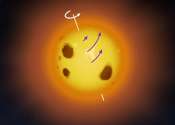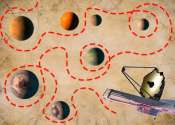Astronomers find anomalies in star V889 Herculis's rotation
The sun rotates the fastest at the equator, whereas the rotation rate slows down at higher latitudes and is the slowest at the polar regions. But a nearby sun-like star—V889 Herculis, some 115 light years away in the constellation ...









